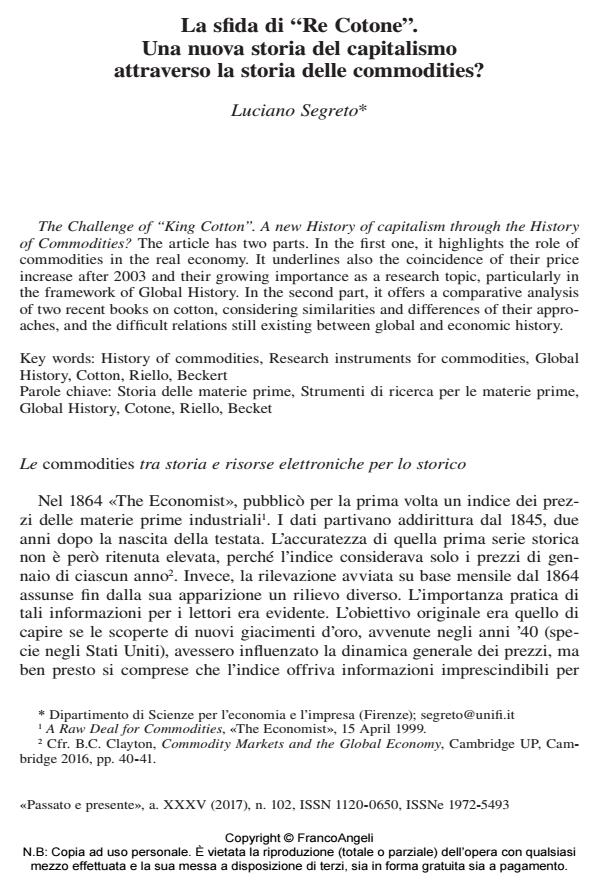The Challenge of "King Cotton". A new History of capitalism through the History of Commodities?
Journal title PASSATO E PRESENTE
Author/s Luciano Segreto
Publishing Year 2017 Issue 2017/102
Language Italian Pages 16 P. 93-108 File size 134 KB
DOI 10.3280/PASS2017-102005
DOI is like a bar code for intellectual property: to have more infomation
click here
Below, you can see the article first page
If you want to buy this article in PDF format, you can do it, following the instructions to buy download credits

FrancoAngeli is member of Publishers International Linking Association, Inc (PILA), a not-for-profit association which run the CrossRef service enabling links to and from online scholarly content.
The article has two parts. In the first one, it highlights the role of commodities in the real economy. It underlines also the coincidence of their price increase after 2003 and their growing importance as a research topic, particularly in the framework of Global History. In the second part, it offers a comparative analysis of two recent books on cotton, considering similarities and differences of their approaches, and the difficult relations still existing between global and economic history.
Keywords: History of commodities, Research instruments for commodities, Global History, Cotton, Riello, Beckert
- Pionieri nella frontiera del legname? I commercianti di legname in Italia settentrionale durante l'industrializzazione Giacomo Bonan, in IMPRESE E STORIA 46/2023 pp.63
DOI: 10.3280/ISTO2022-046003
Luciano Segreto, La sfida di "Re Cotone". Una nuova storia del capitalismo attraverso la storia delle commodities? in "PASSATO E PRESENTE" 102/2017, pp 93-108, DOI: 10.3280/PASS2017-102005